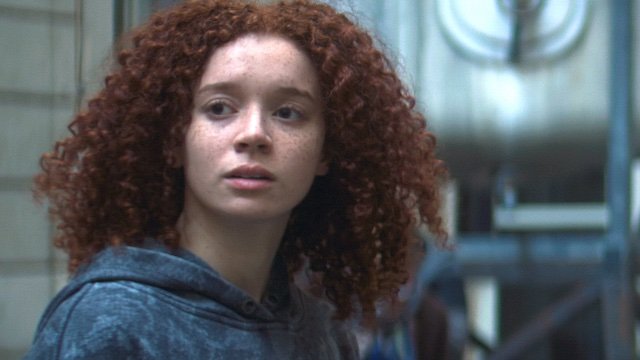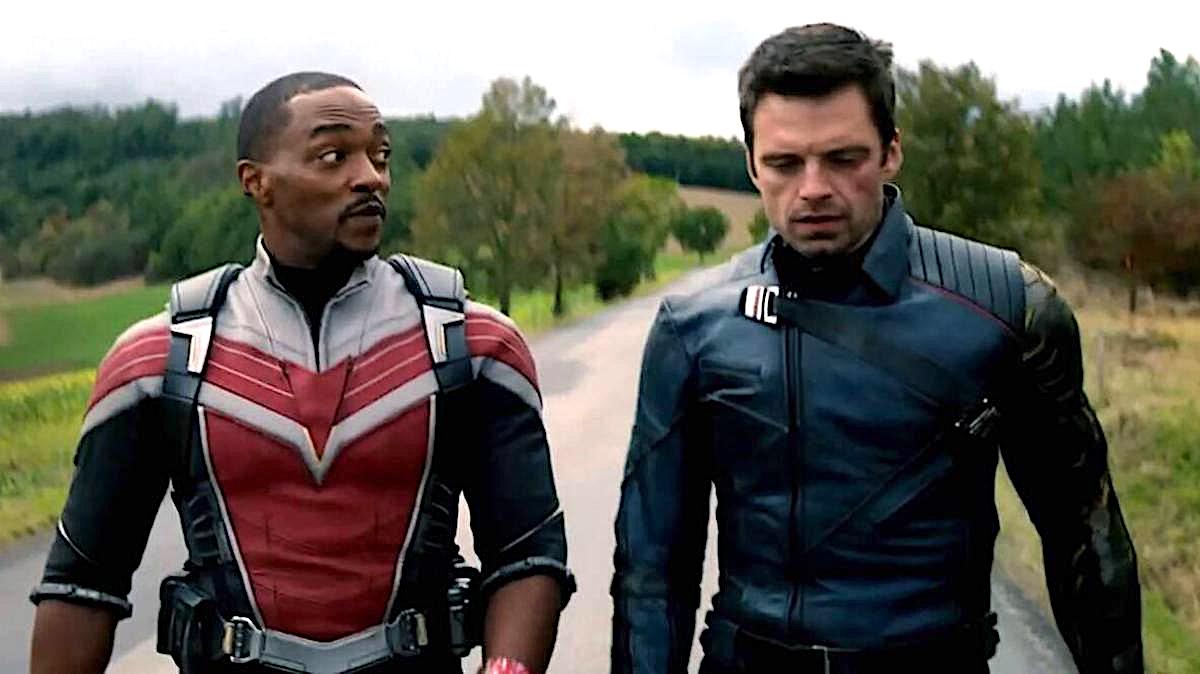The spinoffs of the Marvel Comic Universe (MCU) show no signs of slowing down. Which brings us to The Falcon and the Winter Soldier, initially a two-hander between these two characters. We pick up the timeline after the Avengers obliteration and Captain America (Wyatt Russell) has gone AWOL. Sam Wilson (the Falcon) played by Anthony Mackie and Bucky Barnes (the Winter Soldier) played by Sebastian Stan are each vying to carry the Captain America shield.
Malcom Spellman, the show’s creator, head writer, and life-long MCA aficionado, fought hard to develop his take on the buddy genre. Rather than focusing on an ensemble cast, Spellman began this take on The Falcon And The Winter Soldier as a two-hander concept – a theatrical term used to define a play restricted to two characters. This allowed him to dive deeper into the psyche of the Sam and Bucky, relatively free from the clutter of the other (but no less important) Avengers characters. He described his writing on the project as “urgent, honest and chaotic.”

Malcolm Spellman
Spellman spoke with Creative Screenwriting Magazine about bringing his addition to the MCU to the screen. “It was poetic. My affinity and love for the comics formed the basis of the two-hander.” He describes the format as a genre which Marvel wanted to explore for a while as a means of expanding the reach and intimacy of their characters. The Marvel executives want each Avengers movie to lean in toward a different genre and format to give it a fresh look. “The Falcon And The Winter Soldier is a political thriller,” declared Spellman.
Adapting the comic books into a film or TV series is never a transliteration. “A comic translates differently than real life characters. You capture the spirit and intention of the comics and dramatize them for the screen. Drawings on paper are a very different storytelling medium than a movie with real characters.”
Another aspect of two-handers that appeals to the writer is “that they have a history of taking on real topics in a way that is very direct without losing all the fun.”
Two-handers are a vibe. They are an energy and a tone.
Although the story behind Winter Soldier is new, the underlying characters are well-defined in the MCU. Spellman didn’t necessarily feel a conflict between his original two-hander spin and slavishly adhering to the character prototypes which audiences expect or even demand. “I was a fan before I wrote this. I know the Marvel movies I love and i know who I want to please.” Nothing he wrote was out of character for Sam and Bucky.
Stillman had a process to balance the two when he wrote the show. “You have to write with an unclouded mind and focus. Your intuition and your instincts will guide you towards making these characters the best they can be.”
Malcolm’s initial pitch to Marvel executives went so well they virtually gave him the keys to the MCU kingdom, with minimal restrictions.
Kevin Feige, the show’s executive producer gave Spellman a large amount of creative freedom with one key mandate – that each episode felt like a movie. “Kevin wanted the series to go deep the way serialized storytelling goes. Storytelling in movies is urgent and told in compressed time and has a rhythm.” Malcolm Spellman relished the opportunity to blend these two types of storytelling – two-handers and movies. It took weeks for the writer and his TV writers’ room to mould the story into those storytelling mechanics.
Writing a two-hander TV series allowed Malcolm and his team to more richly explore the Falcon and the Winter Soldier. “When you’re dealing with a huge cast of beloved [Avengers] characters, every one of them becomes obligatory on screen. You must give each some attention.” A large amount of the screen’s real estate is taken and you get to play with what little is left. “Having more space in the TV series allowed for personal moments between the Falcon and the Winter Soldier,” he continued. Spellman cites the example of the boat that’s attached to a family that goes back several generations of black fishermen. “It was a chance for me to really explore the relationship between Sam and Bucky.”
A Study In Masculinity
Sam and Bucky deeply mines the male psyche and their relationships in terms of not being supported in their struggles. They are uniquely situated as outcasts to interact with each other because they know each other so well. John Walker (Captain America) is a study of “the assumption of American affluence and the arrogance and hubris that comes with that assumption… and the privilege and machismo that comes with being the embodiment of this ‘kick-ass’ country.”

John Walker aka Captain American (Wyatt Russell)
The Falcon And The Winter Soldier examines several hefty themes including racism and social justice. As long as the TV writers stayed honest to the story the audience would welcome these controversial and emotive topics. “There was no hiding from it. We would be lying to the fans if we did. We never got on a pulpit to preach. We never imposed an agenda. We wanted the audience to know that what they were watching was the unvarnished truth and there was no way to escape it.”
The Falcon And The Winter Soldier TV writers’ room ran like a well-oiled story machine – eight hours a day in the office. Malcolm Spellman describes himself as “super methodical” in the room so the time was used efficiently.
The lobby of the Marvel building is filled with three life size Iron Man costumes and one Eternals costume. Along the corridor and you see Aquaman and Thor’s helmet and hammer and Captain America’s shield encased in glass. Further along, the walls are covered with murals of all the Marvel characters. The different writers’ rooms are named after different comic book characters – Spellman had the Iron Man room. “Once you entered the room there was concept art already laid out.”
This welcome set the stage for the writers to plot the season of the show. “In that moment, I could not believe that I’m part of this. I’m reconnecting with my childhood.” One can only imagine how this approach stimulated their creative juices.
It inspired Spellman to flesh out Helmut Zemo’s character (Daniel Brühl) and expand his presence in the series. There was an entire wall dedicated to Zemo in the Marvel building. “We already knew he was going to be included, but the cover art made him more important. His presence felt huge.”
The team started breaking the show with a blue sky approach. “At first we laid out any story we could find. You start writing the stuff you know. You write clutter that you may or may not use.”
Then the heavy lifting began and the writers worked on the character arcs and the evolutionary relationships across their timelines. Every writer spitballed what these relationships might look like and play out. “Every writer’s DNA is in every scene of every episode.”

Karli Morgenthau (Emily Kellyman)
Flag Snatchers & The Global Repatriation Council (GFC)
Malcolm Spellman believes that the Flag Snatchers and the GRC “are an embodiment of our country today.” The Flag Snatchers could be a metaphor for any organization seeking massive change. They are the rebels against the forces oppressing the people’s wants. “The Flag Snatchers are a sentiment that the average human being often identifies with.” Karli Morgenthau (Erin Kellyman) the head of the Flag Snatchers is both a heroine and a villain.
The GRC represents the groundswell of people dissatisfied with their current circumstances are are finally gathering the momentum to initiate lasting change. The GRC may represent various political ideologies, but Spellman believes it is beyond politics. It is the current state of the world. “It represents a headspace and a state of mind.”
In conclusion, Malcom Spellman shares his final thoughts working on The Falcon And The Winter Soldier. Great actors can remove substantial dialogue and replace it with a few words or even a gesture. “A ton of what you write isn’t necessary for the production because the images are so powerful. You don’t need to hold the audience’s hand.“
